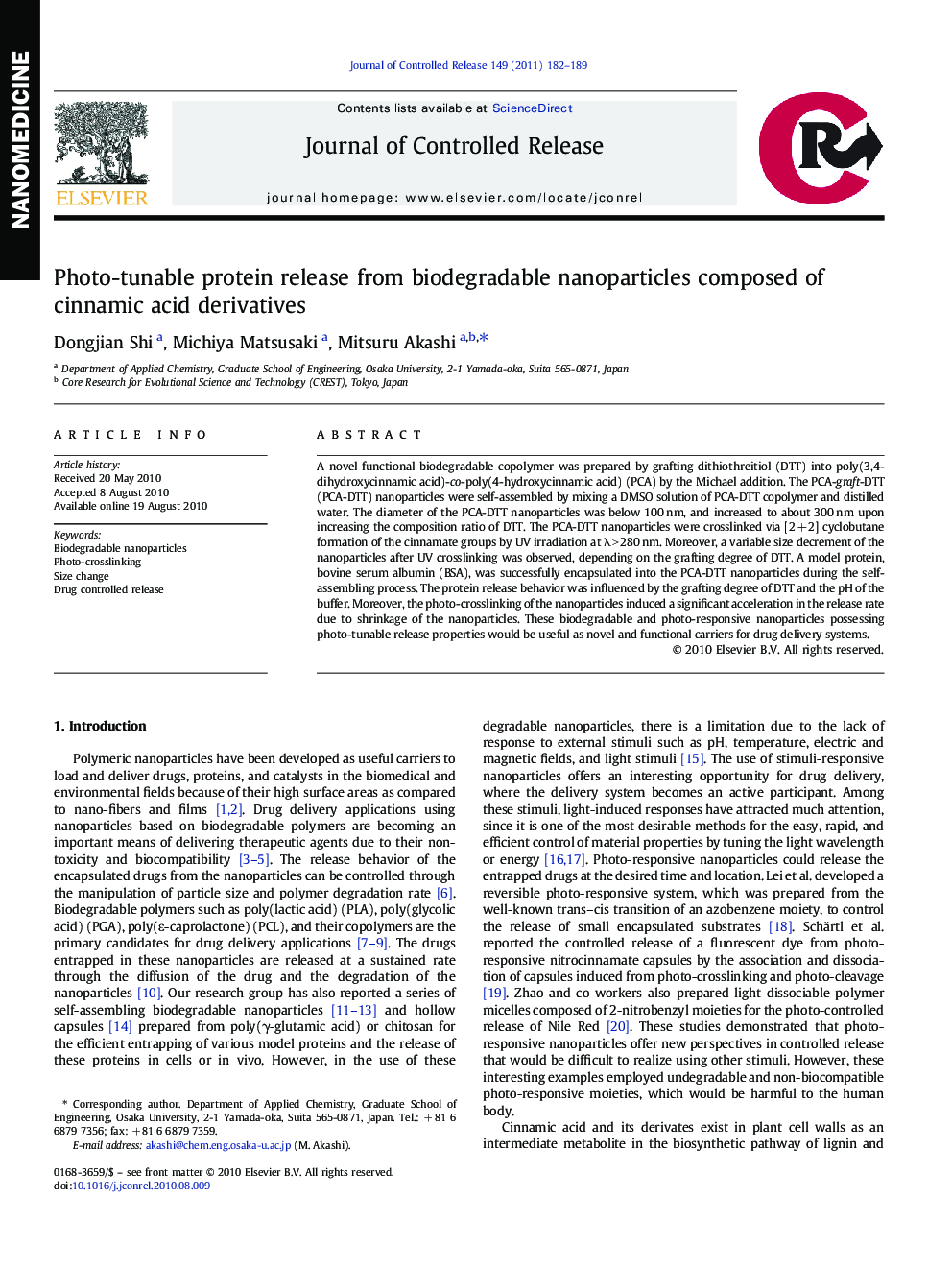| کد مقاله | کد نشریه | سال انتشار | مقاله انگلیسی | نسخه تمام متن |
|---|---|---|---|---|
| 1425351 | 986764 | 2011 | 8 صفحه PDF | دانلود رایگان |

A novel functional biodegradable copolymer was prepared by grafting dithiothreitiol (DTT) into poly(3,4-dihydroxycinnamic acid)-co-poly(4-hydroxycinnamic acid) (PCA) by the Michael addition. The PCA-graft-DTT (PCA-DTT) nanoparticles were self-assembled by mixing a DMSO solution of PCA-DTT copolymer and distilled water. The diameter of the PCA-DTT nanoparticles was below 100 nm, and increased to about 300 nm upon increasing the composition ratio of DTT. The PCA-DTT nanoparticles were crosslinked via [2 + 2] cyclobutane formation of the cinnamate groups by UV irradiation at λ > 280 nm. Moreover, a variable size decrement of the nanoparticles after UV crosslinking was observed, depending on the grafting degree of DTT. A model protein, bovine serum albumin (BSA), was successfully encapsulated into the PCA-DTT nanoparticles during the self-assembling process. The protein release behavior was influenced by the grafting degree of DTT and the pH of the buffer. Moreover, the photo-crosslinking of the nanoparticles induced a significant acceleration in the release rate due to shrinkage of the nanoparticles. These biodegradable and photo-responsive nanoparticles possessing photo-tunable release properties would be useful as novel and functional carriers for drug delivery systems.
Graphical AbstractFigure optionsDownload as PowerPoint slide
Journal: Journal of Controlled Release - Volume 149, Issue 2, 20 January 2011, Pages 182–189